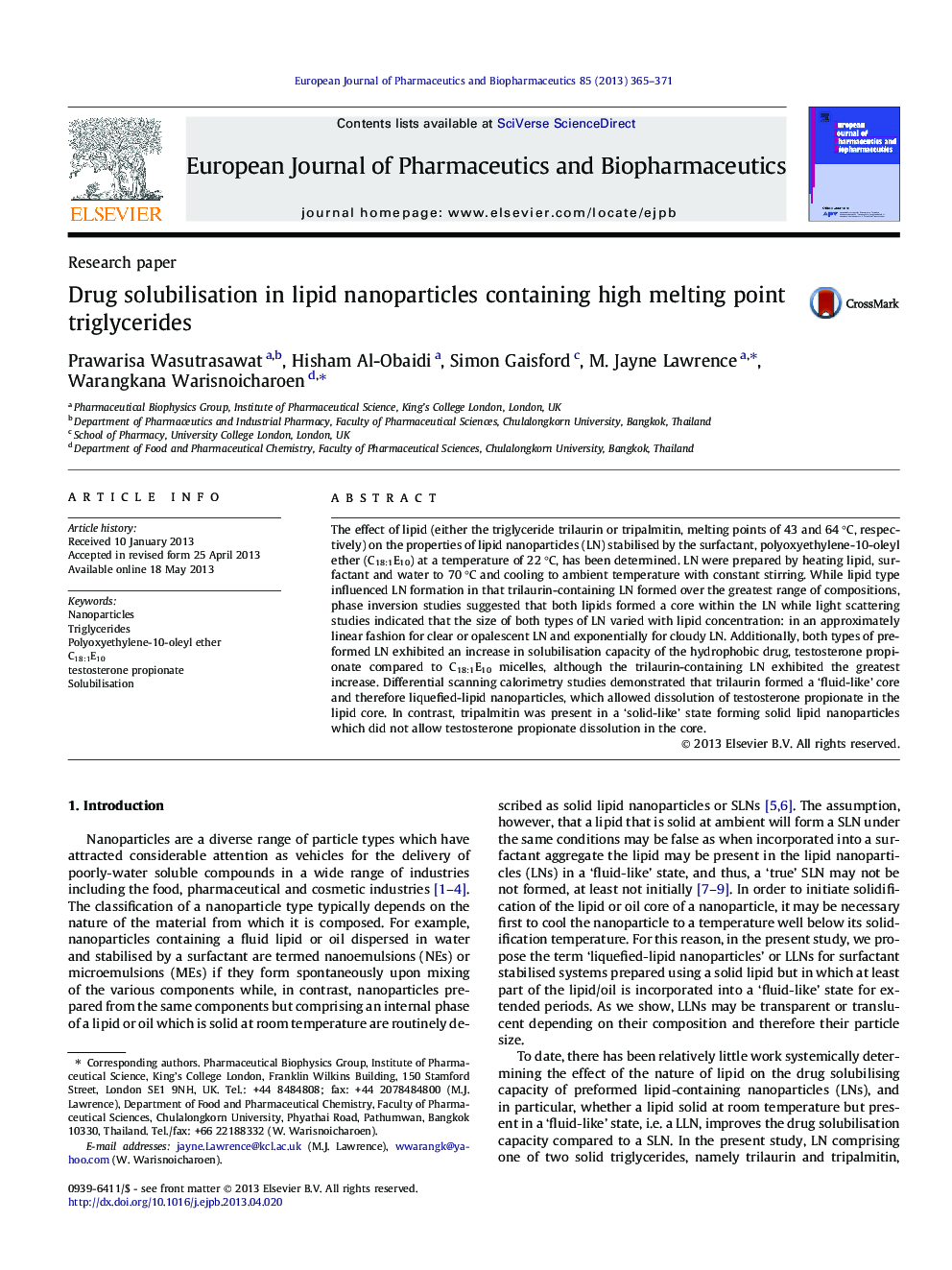| Article ID | Journal | Published Year | Pages | File Type |
|---|---|---|---|---|
| 2083700 | European Journal of Pharmaceutics and Biopharmaceutics | 2013 | 7 Pages |
The effect of lipid (either the triglyceride trilaurin or tripalmitin, melting points of 43 and 64 °C, respectively) on the properties of lipid nanoparticles (LN) stabilised by the surfactant, polyoxyethylene-10-oleyl ether (C18:1E10) at a temperature of 22 °C, has been determined. LN were prepared by heating lipid, surfactant and water to 70 °C and cooling to ambient temperature with constant stirring. While lipid type influenced LN formation in that trilaurin-containing LN formed over the greatest range of compositions, phase inversion studies suggested that both lipids formed a core within the LN while light scattering studies indicated that the size of both types of LN varied with lipid concentration: in an approximately linear fashion for clear or opalescent LN and exponentially for cloudy LN. Additionally, both types of preformed LN exhibited an increase in solubilisation capacity of the hydrophobic drug, testosterone propionate compared to C18:1E10 micelles, although the trilaurin-containing LN exhibited the greatest increase. Differential scanning calorimetry studies demonstrated that trilaurin formed a ‘fluid-like’ core and therefore liquefied-lipid nanoparticles, which allowed dissolution of testosterone propionate in the lipid core. In contrast, tripalmitin was present in a ‘solid-like’ state forming solid lipid nanoparticles which did not allow testosterone propionate dissolution in the core.
Graphical abstractFigure optionsDownload full-size imageDownload high-quality image (158 K)Download as PowerPoint slide
